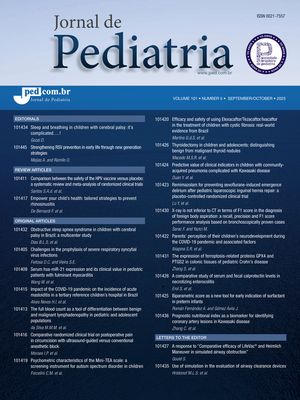
to review the recent medical literature on the treatment of neonatal jaundice, focusing on practical aspects that are relevant to pediatricians and neonatologists.
Sourcesan extensive review of the related literature was performed, also including the author's clinical experience in this field of investigation.
Summary of the findingsjaundice is very common among infants during the first days of life. Several factors such as maternal and neonatal history have to be considered before implementing treatment. Significant advances have been made in the past few years concerning the treatment of jaundiced newborn infants. This review focuses on three forms of treatment of neonatal hyperbilirubinemia: phototherapy, exchange transfusion and the use of drugs to reduce serum bilirubin concentration.
Conclusionsnowadays, the in-depth knowledge about the mechanism of action of phototherapy, the development of intensified phototherapy units and the use of drugs to reduce bilirubin formation, have contributed to significantly decrease the need for exchange transfusion.
rever a literatura atual sobre o tratamento da icterícia neonatal, enfocando os aspectos práticos relevantes para pediatras e neonatologistas.
MétodoFoi utilizada extensa revisão bibliográfica associada à experiência do autor neste campo de investigação.
Resultadoa icterícia neonatal é, sem dúvida, a patologia mais freqüentemente encontrada em recém-nascidos. Entretanto, diversos fatores tais como a história obstétrica materna e o parto, bem como a história neonatal devem ser analisados antes que a terapêutica seja instituída. Progressos significativos foram feitos nos últimos anos com relação ao tratamento da hiperbilirrubinemia neonatal. Esta revisão aborda pesquisas recentes sobre o mecanismo de ação, indicação e aspectos práticos sobre o uso da fototerapia. Revisa, a luz da literatura atual, a exangüineotransfusão e o uso de drogas no tratamento da icterícia neonatal.
Conclusãoum maior conhecimento acerca dos mecanismos de ação da luz sobre a molécula de bilirrubina, aliado ao desenvolvimento de novos e mais eficazes modelos de fototerapia tem permitido um tratamento menos invasivo do recém-nascido ictérico. Fototerapias de alta intensidade, aliadas a drogas que diminuem a produção de bilirrubina, tem possibilitado uma redução considerável no uso da exangüineotransfusão no tratamento da hiperbilirrubinemia neonatal.








